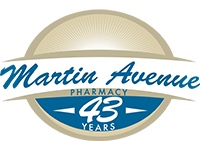Compounded Medications for Pediatric Patients
The Need for Extemporaneously Compounded Medications for Pediatric Patients
It has been estimated that over 80% of drugs approved by the FDA are
not labeled for pediatric populations. For example, in 1997, only 5 of
the 80 drugs most commonly used in newborn infants were labeled for
neonatal use. Therefore, these drugs are usually not available in
suitable pediatric dosage forms (i.e, liquid, chewable, or transdermal).
The small pediatric market may be the leading reason for the lack of
investment in drug development for this population by the pharmaceutical
industry.
Pediatricians and other specialists are dedicated to addressing the
unique needs of their young patients, and compounding pharmacists
possess the creativity to meet their needs. Preparation of customized
medications for pediatric patients is much more than dilution of more
concentrated dosages.
Consideration must be given to:
• appropriate vehicle/base
• physical or chemical properties of active ingredients
• use of preservatives that are safe in children
• taste
• odor
• viscosity
• color
• uniformity
• smoothness/grittiness
• stability
An ideal oral drug for children should be effective, well tolerated,
and have good palatability, i.e. acceptable taste, after-taste, and
smell. A palatable formulation is more likely to improve compliance and
minimize spillage or waste during administration of doses.
Medications are often complex mixtures containing many other
components besides the active ingredient. Liquid formulations must often
be prepared at the time of dispensing by the pharmacist, using
appropriate excipients (inactive ingredients) which consist of bulk
materials, flavorings, sweeteners, and coloring agents. Unlike the
active ingredients, excipients are not well regulated in most countries.
Although most are well tolerated, a variety of excipients cause adverse
side effects and idiosyncratic reactions. Proper selection and use of
these substances is critical, especially in liquid and chewable
preparations that are mostly consumed by infants and children.
NIH News Alert Nov. 25, 1997
Secundum Artem 8(3)
Paediatr Drugs. 2002;4(6):371-9
We can compound the needed medication in the most appropriate dosage
form, and eliminate problem causing excipients such as lactose, dyes,
sugar, alcohol, and preservatives.
Copyright 2003, Storey Marketing – Monthly Website Updates. Reproduction
prohibited. Questions regarding this article should be directed to the
compounding professionals at Martin Avenue Pharmacy, Inc. by calling
630-355-6400.
